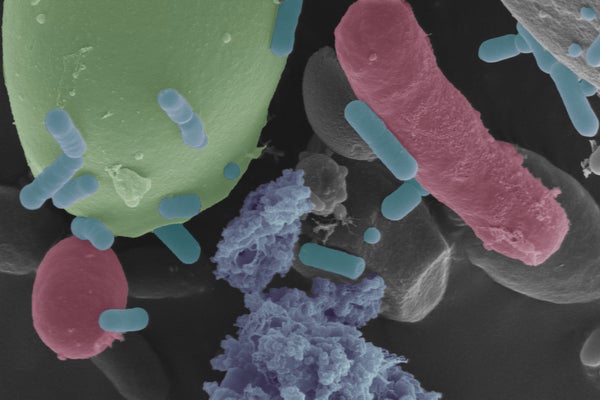See What Gives Sourdough Its Distinctive Taste and Smell
You can thank yeast and bacteria cultivated over generations for the distinctive taste and smell of the oldest leavened bread in history
Microbes make a home among the starch grains of your sourdough starter.
The following essay is reprinted with permission from ![]() The Conversation, an online publication covering the latest research.
The Conversation, an online publication covering the latest research.
Sourdough is the oldest kind of leavened bread in recorded history, and people have been eating it for thousands of years. The components of creating a sourdough starter are very simple – flour and water. Mixing them produces a live culture where yeast and bacteria ferment the sugars in flour, making byproducts that give sourdough its characteristic taste and smell. They are also what make it rise in the absence of other leavening agents.
My sourdough starter, affectionately deemed the “Fosters” starter, was passed down to me by my grandparents, who received it from my grandmother’s college roommate. It has followed me throughout my academic career across the country, from undergrad in New Mexico to graduate school in Pennsylvania to postdoctoral work in Washington.
On supporting science journalism
If you’re enjoying this article, consider supporting our award-winning journalism by subscribing. By purchasing a subscription you are helping to ensure the future of impactful stories about the discoveries and ideas shaping our world today.
Currently, it resides in the Midwest, where I work at The Ohio State University as a senior research associate, collaborating with researchers to characterize samples in a wide variety of fields ranging from food science to material science.
As part of one of the microscopy courses I instruct at the university, I decided to take a closer look at the microbial community in my family’s sourdough starter with the microscope I use in my day-to-day research.
Scanning electron microscopes
Scanning electron…
Read the full article here







